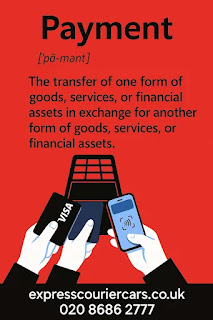Deconstructing the Discrepancy Between Driver Pay and Customer Fares
Introduction: The Shifting Sands of the Gig Economy
The Promise of Ridesharing: Convenience and
Opportunity
The Growing Discrepancy: A Troubling Trend
Setting the Stage: Why This Gap Matters to Everyone
Unpacking the Uber Fare: A Customer's Perspective
Per-Mile and Per-Minute Charges: The Core
Components
Dynamic/Surge Pricing: Demand and Supply in
Real-Time Croydon Taxi
Additional Fees and Surcharges: The Hidden Costs
(e.g., booking fees, tolls, taxes, airport fees)
Promotions and Discounts: How They Impact the
Customer's Final Price
Deconstructing Driver Earnings: What Drivers See
The "Net Fare": What's Left After Uber's Cut
Uber's Commission/Service Fee: The Variable Percentage
Promotional Incentives for Drivers: Boosting Supply
Tips: A Direct Contribution from Customers
Driver Expenses: The Unseen Costs of Doing Business
(fuel, maintenance, insurance, depreciation, taxes)
The "More Than 25%" Phenomenon:
Quantifying the Discrepancy
Documenting the Gap: Empirical Evidence and Driver
Testimonials
Case Studies: Specific Examples of Disproportionate
Charges
Analyzing Industry Reports and Studies: Broader
Trends
The "Take Rate" Debate: What Percentage
Does Uber Truly Keep?
Uber's Business Model and Revenue Streams: A Corporate Lens
The Platform as a Marketplace: Connecting Supply
and Demand
Leveraging Network Effects: Growth and Dominance
Diversification Beyond Ride-Hailing: Uber Eats,
Freight, etc.
Investor Expectations and Profitability Pressures
Operational Costs: Beyond Driver Pay
Technology Development and Maintenance: The App's
Engine Room
Marketing and Customer Acquisition: Sustaining
Growth
Safety and Support Infrastructure: Ensuring a
Seamless Experience
Legal and Regulatory Compliance: Navigating a
Complex Landscape
Insurance and Liability: A Significant Overhead East Croydon Taxi
The Role of Dynamic Pricing: A Double-Edged Sword
Mechanism of Surge Pricing: Algorithm and
Real-World Impact
Intended Purpose: Balancing Supply and Demand
Unintended Consequences: Price Gouging Perceptions
and Driver Frustration
Transparency in Dynamic Pricing: What Customers and
Drivers See
Regulatory Landscape and Legal Challenges
Driver Classification: Employee vs. Independent
Contractor
Minimum Wage and Benefits Debates: Global and Local
Contexts
Transparency in Pricing Legislation: Efforts to
Mandate Clarity
Antitrust Concerns and Market Dominance
Driver Perspectives: The Lived Experience of the
Discrepancy
Declining Per-Trip Earnings: A Race to the Bottom?
The Gig Economy's Promise vs. Reality
Financial Strain and Job Security Concerns
Collective Action and Driver Advocacy Groups
Customer Perspectives: Value, Fairness, and Trust
Perceived Value of Convenience: Willingness to Pay
Understanding the Fare Breakdown: Lack of Clarity
The Impact of Surge Pricing on Customer Loyalty
Erosion of Trust: When Fares Feel Unfair
Economic Implications: Broader Societal Impact
Impact on Local Economies and Traditional Taxi
Services
The Future of Work and Labor Rights in the Gig
Economy
Consumer Spending Habits and Ridesharing Dependency
Wealth Distribution in the Digital Age
The Quest for Transparency: What Can Be Done?
Clearer Fare Breakdowns for Customers
More Detailed Earning Statements for Drivers
Industry Standards for Commission Rates
Role of Independent Audits
Alternative Models and Solutions
Driver-Owned Cooperatives: Empowering the Workforce
Regulated Ride-Hailing: Government Intervention
Subscription Models: Alternative Pricing Structures
Blockchain-Based Decentralized Platforms
Uber's Response and Future Outlook
Public Relations and Communications Strategy
Investments in Driver Support and Benefits
Navigating Shareholder Demands and Social
Responsibility
Long-Term Vision for Driver-Partner Relationships
The Power Dynamics: Who Holds the Leverage?
Uber's Algorithmic Control over Pricing and
Dispatch
The Individual Driver's Limited Bargaining Power
The Collective Power of Drivers and Advocacy Groups
Consumer Choice and Market Competition
Ethical Considerations of Platform Capitalism
Fairness and Equity in the Gig Economy
The Social Contract Between Platforms, Drivers, and
Customers
Corporate Responsibility Beyond Profit Maximization
Global Variations: How the Discrepancy Differs
Worldwide
Regulatory Environments and Their Impact on Pay
Structures
Cultural Attitudes Towards Gig Work
Market Saturation and Competition in Different
Regions
Technological Advancements and Their Potential
Impact
Autonomous Vehicles: The Ultimate Disruption to
Driver Pay
AI and Machine Learning in Pricing Optimization
Data Analytics for Rider and Driver Behavior
Recommendations for Drivers and Customers
For Drivers: Strategies to Maximize Earnings and
Advocate for Rights
For Customers: Understanding Fares and Making
Informed Choices
Supporting Ethical Ride-Hailing Alternatives
Conclusion: Towards a More Equitable Ridesharing
Future
Recapping the Core Issues Croydon Airport Taxi
The Need for Balance: Profitability, Driver
Livelihoods, and Customer Value
A Call to Action for Stakeholders to Drive Change
Summary: This article
delves into the complex and often contentious issue of the significant
disparity between what Uber charges its customers for rides and what its
drivers ultimately receive. We've explored the intricate breakdown of Uber's
fare structure from both customer and driver perspectives, quantifying the
"more than 25%" phenomenon. The outline meticulously examines Uber's
business model, operational costs, and the controversial role of dynamic
pricing. Furthermore, it addresses the critical legal and regulatory
challenges, the lived experiences of drivers, and customer perceptions of
fairness and trust. By dissecting the economic implications and power dynamics,
the article seeks to foster a deeper understanding of platform capitalism's
impact and proposes solutions for a more transparent and equitable ridesharing ecosystem,
looking towards a future where technology, profitability, and social
responsibility can coexist.
FAQs:
What exactly is the "Service Fee" Uber
charges drivers?
How much of the customer's fare does Uber typically
keep?
Why does Uber use "surge pricing," and
how does it affect driver pay?
Are Uber drivers considered employees or
independent contractors, and why does it matter for their pay?
What are the main expenses an Uber driver faces
that reduce their net earnings?
How can customers find out the exact breakdown of
their Uber fare?
Are there regulations in place to limit how much
Uber can take from a fare?
What are some of the common complaints drivers have
about Uber's pay structure?
How do promotions offered to customers impact
driver earnings?
What are the potential future impacts of autonomous
vehicles on Uber driver pay?






No comments:
Post a Comment